What if the smart devices around your home could all interact with each other, even if they were from different manufacturers or different systems? Say your front door sensor could trigger a light to turn on in the living room when you get home. Currently, to get this kind of interoperability, you either need to acquire all the components of the same system (like Insteon), or have one agnostic hub that tries to “talk” all the different languages of the smart home landscape (like Staples Connect, SmartThings, and the dreadful Wink).

What if there was another way? What if each of your home devices could speak the same langauge independent of manufacturer? An Elgato door sensor that opens when you get home could tell an Ecobee thermostat to turn house temp to 72 degrees. Or turning off a specific Lutron light switch in the bedroom could tell the August front door to lock? That’s the promise of Apple’s HomeKit.
Much has been written already about HomeKit. But now that Apple is officially allowing vendors to start selling devices, we are finally starting to get a better understanding of what can and can’t be done with HomeKit. At first, my thought was that the iPhone now becomes the “hub” to control the devices of your home, but that was the wrong way to think about HomeKit. HomeKit is much more far reaching.
I recently upgraded my Lutron Caseta hub to the new HomeKit version. Despite the process being much harder than it should have been to migrate to the new hub, I wanted that first glimpse of HomeKit. Upon doing so, I now had the ability to create rooms and devices that were cataloged by HomeKit and now also had the ability to use voice to control things. But the first “wow” moment was when I decided to open the Elgato Eve app on my iPhone. I had recently ordered some of the new Eve products and wanted to see what the app looked like.
To my surprise, all the Lutron Caseta lights automatically displayed in the Eve app, with device names and rooms already in place. Even better, I could control all the lights directly from the Eve app! When I opened the Eve app on my iPad, the same was also true. Lutron doesn’t make an iPad version of their app, but here I was controlling the Caseta lights with a totally separate app from Elgato.
That is the power of HomeKit. It is the ability to standardize the language spoken by all your smart home things. So that these things can all interact with each other and can be controlled by multiple iOS devices without one needing to be a central control point. It’s finally a hubless smart home hub. :-)
With additional HomeKit accessories being launched later this month and at the beginning of July, this will be an exciting time for those of us who follow smart home news. Along with Lutron and Elgato products, Insteon, iHome, and Ecobee have also announced HomeKit compatible products. Be warned though, to utilize these new features, new hardware will be required.


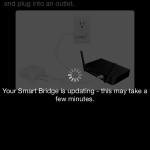
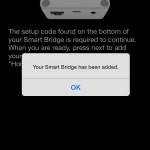
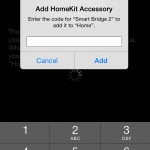
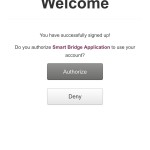
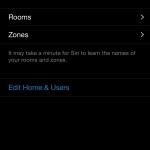
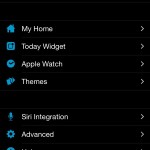
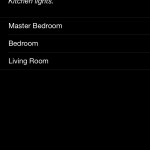
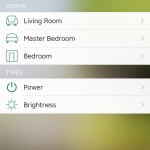
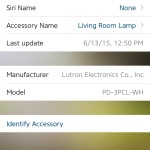
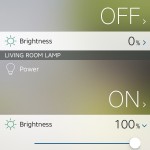
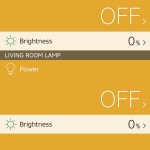
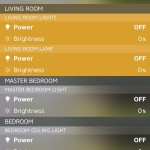
Nice write-up, Adam. I’m still trying to get used to Lutron’s limited app. Not supporting iPad seems like a big omission, and I’m as of yet unable to figure out how to expose scenes from the Home Bridge [and it’s interesting to note that those DO exist on a hub at this point] to HomeKit. AND YET, I can use the Insteon+ app to create and run a scene using Siri that controls the Lutron lights exposed through HomeKit. Ugh, I’m so frustrated by the lack of information, consistency, and clarity around how this is all supposed to work.
I’m feeling a lack of HomeKit info and understanding at this time. Still trying to wrap my mind how it all interoperates. And, even with HomeKit, we’re potentially going to need other hubs like Lutron or Hue. Hubs on top of hubs on top of hubs. Maybe the next Apple TV or Amazon Echo integrates Z-wave and Zigbee to further simplify and then we just worry about the sensors, lights, switches, locks, themselves. All I want is motorized window coverings… but Serena doesn’t side mount in the width I need.
What would Brillo do?
I’m still trying to figure out how all this will fit together, simple and easily. So far, it’s not that much different from Staples Connect. I thought with Apple getting involved, we would only need ONE hub to work with everything but it still looks like we’ll need multiple hubs connected to our wireless routers. I know for Apple, it’s about using THEIR hardware (iPhones, iPads, etc.) but I was hoping for just using ONE hub, not three or more. I thought Lutron would be better at lighting than Insteon but Insteon has a vast ecosystem of products (lighting, sensors etc.). They also seem to be cheaper. What’s your opinion?
As I have posted in MANY other blogs, I have spent/wasted thousands of dollars on home automation equipment because of the lack of info. I finally connected the Lutron bridge and installed my entire house with hardwired light switches and about 10 plug in dimmers. The Lutron app DOES work great, but why did I spend a fortune getting my iPad professionally mounted into my wall ( landscape). Number one reason why I left Staples Connect and Wink. ( well wink amongst other things. And staples laughable customer support). So yesterday I hear the Withings camera was Homekit compatible. Spent 200 bucks and have NO IDEA how to connect it to Homekit. Anybody know?
So what do I do now? I have been anxiously sitting with a brand new VeraEdge controller and tons of Vera equipment as well. Do I install those? Will Vera be compatible with Homekit?
Bottom line— I WOULD LIKE TO KNOW WHERE TO GO TO SEE **MY HOMEKIT ECOSYSTEM**.
Justin, my advice here is to tread cautiously and avoid investing in products until they show the Works with Apple HomeKit logo on their packaging. It is extremely unlikely that the Withings camera you built is HomeKit compatible. Yes, they announced last Fall that the camera would be, but things have changed. Apple’s hardware (read: silicon) requirements for HomeKit have emptied most early promises of product compatibility. If it wasn’t released after June 2 and didn’t have the HomeKit logo on the box, it’s probably not going to work.
We’re in early days, and as much of as an early adopter as I am (and as much as I’ve spent on products myself), I have to keep in mind that most companies are still trying to figure this all out.
P.S. I want the mounted iPad thing, too!
Wall mounting iPad is not a bid deal … unless you need power. ;)
My understanding is that Apple’s “requirement” for HomeKit is a specific WiFi chipset that most current Hubs don’t have, is that correct?
I’ve given up on Wink (too buggy and Z-wave performance was awful) and now am using Staples Connect.
Waiting this one out a bit to see what new hubs feature Homekit support. If I knew Homekit was here to stay, I’d spend $150ish on a hub that would work and have support. But for now I’ve been going with the “cheap” or “free” hubs while things settle out.
I like the Staples Hub (got it free with a few devices) and it is so much better than Wink, even on the “Wink” lights… Just switched all my equipment over between hubs. Took about an hour for 10 devices, but a non techie would never figure it out, thats the beauty of Homekit I think, simplification.
As to Wink… You’d think the Hub maker, or a team related to the Hub maker, would be able to have their own products work better with their hub but not Wink… Those guys don’t seem to have their act together even a year after launch… The lights work so much better with Staples Connect than the Wink hub itself!
~Mike
Wink hub was the first actual hub that I had. I actually loved it and their support was phenomenal but their app bricked my phone and luckily Apple replaced it. Then came Staples connect which also worked pretty good but failed to add half of my devices due to their laughable customer support. So far I am super happy with Lutrons Smart Bridge 2.
@Richard…good call on starting a scene with Siri, didn’t think about that. Just tried it and it worked from the Eve app controlling the Lutron hub. That’s kinda crazy. :-)
Yes, these are early days, but I like the fact that you can just mix and match different devices within HomeKit, some that will require a 3rd party hub (like Lutron/Insteon), and some that are stand alone (like the Eve door tabs). It will be interesting to see how the stand alone devices work without a hub. Hopefully will find out in a couple weeks when the Eve products ship.
The app agnostic integration of components is definitely appealing. The question may be whether Apple’s device restrictions and and higher barrier to entry for OEMs weighs HomeKit down before it gets started.
At this point, it’s still a nice-to-have rather than a must-have, but like you said things are changing quickly.
I’ve taken the stance that I’m purchasing items that have wide industry acceptance (Z-wave switches and outlets, Lutron products, and some Zigbee products like the Link lights) and just am accepting for the time being that there will be new hubs every so often coming out that will work with these devices. PITA to switch and reprogram and I hope HomeKit will really be the “glue” to bring all these things together. If I have to buy “one last hub to rule them all” so be it… I’ve paid literally $0 for my Wink and Staples hub (used the “industry standard” components mentioned above as the items that qualified me for the “free” hubs).
My first purchase in May 2014 were the TCP Connected Lights. They work great (and had offline and local access long before Staples hub did) and I run them independently of the rest of my system, mainly using the sunset timing function. Any light I don’t need to regularly or manually control I use one of the 8 TCP Connected lights. I’m not expanding or adding any more lights (they are $20 a pop) but they have been rock solid for over a year.
Wonderful to see it develop. Doubt I’ll ever use it because it’ll be Apple only. That’s a shame, but maybe it will influence the home automation industry to get off their bottoms and actually focus on user experience and user interface.
Requiring a hub for basic functionality has never been a good idea, and that is a big reason why I don’t like Z-wave — insteon only needs a hub to configure and to bridge other protocols, I.E. you can turn off an Inston Hub and your scenes will still work via a keypad link. Ideally the devices would be able to integrated with each other directly and require as little outside infrastructure as possible — which is why I dislike requiring an internet connection for integration, like Nest does.
I’m hopeful that HomeKit will offer a lot of direct device integration without a hub. My understanding is that iOS device is only required for configuration and as an outside control point (like Siri). If it requires an iOS device to be on at all times or a connection to the internet, I’ll be severely disappointed.
HomeKit compatible devices requires an authentication chip, at least Wi-Fi devices do, I’m not 100% sure about Bluetooth devices. Apple is working with Marvell and Realtek, but possible also others and their partners have access to the authentication chip. A device with said chip fitted will show up under other networks in the list of Wi-Fi networks on an iOS device and you’ll be asked if you want to add this device to your network when it’s detected the first time.
This company http://www.litehouse.io/ is working on a development kit that will help non-Apple partners to develop HomeKit compatible devices, although they’d still need to get their hands on the authentication chip from Apple somehow.
Ok, major problems guys that needs major attention. Attempted to hook up VeraEdge to control everything I have that Lutron doesn’t control. ( alarm, cameras, front door, sensors). Started this at 11:30am yesterday and from the second I plugged Vera in- NOTHING BUT PROBLEMS AND HEADACHES. Called customer support- no answer. Called a few hours later , no answer, left a message. After bad mouthing them on Twitter, got a phone call from a support rep who had to take control of my computer to get JUST the controller working. So it was time to add those devices. PROBLEMS, problems, problems. This is getting to long so ultimately at 1:00 in the morning, more than 13 hours of doing this, I gave up. Couldn’t connect door lock. Couldn’t could THEIR OWN CAMERAS.
Lutron bridge works flawless. What Homekit device can I get ( Like today) to be able to control my remaining devices? Unfortunately, even if it’s not Homekit. I need control over my devices. Any help?
Justin, if you had to reset your hub, it’s very likely that all of your devices also need to be reset. You don’t mention what protocol you’re using, but if it’s a Vera you were using, I’m going to assume you’re using Z-Wave. Many Z-wave devices can only pair with one controller, so each device would likely need to be factory reset before it can be re-paired with the Vera as its controller.
At this stage in the game, it’s too early days for HomeKit to pick up where your current solution has left off.
Adam would prefer we keep it on topic – specific to the post or broad home automation strokes, versus solving Justin’s compatbility issues and reselling his gear. I’ve cleaned up the thread a bit. Thanks for your understanding.
Apple just announced an Android app for Apple Music at WWDC. What are the odds that they’ll release a HomeKit compatible app for Android? I’m Apple only at my house, so I don’t necessarily care. But just made me think it might be possible.
Tony, it seems highly unlikely. iOS maintains the information about your home and installed accessories (devices) in your iCloud keychain. Unless they were decouple that, I don’t see how they’d implement something on Android.
Tony,
Seeing how closely integrated HomeKit is within iOS, I would not bet on Apple releasing an app on Android. I think Apple Music on Android is a bit different as Beats already had an app for Android. Then again, didn’t Apple just release a “Switch from Andorid” app?